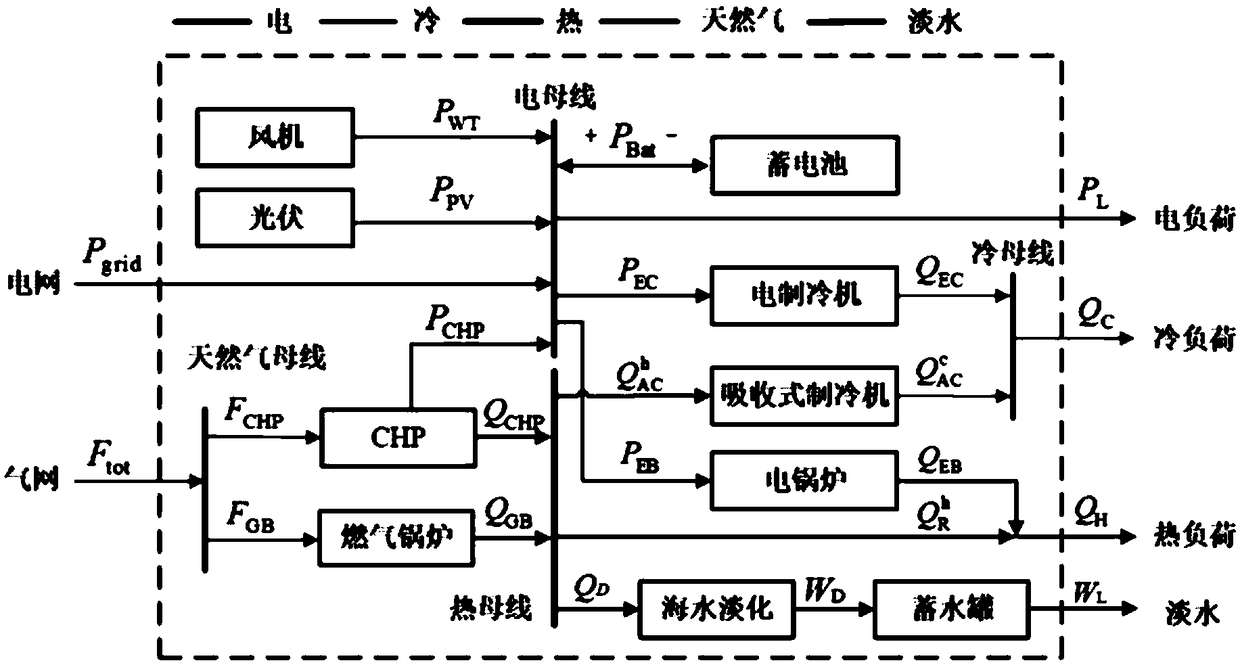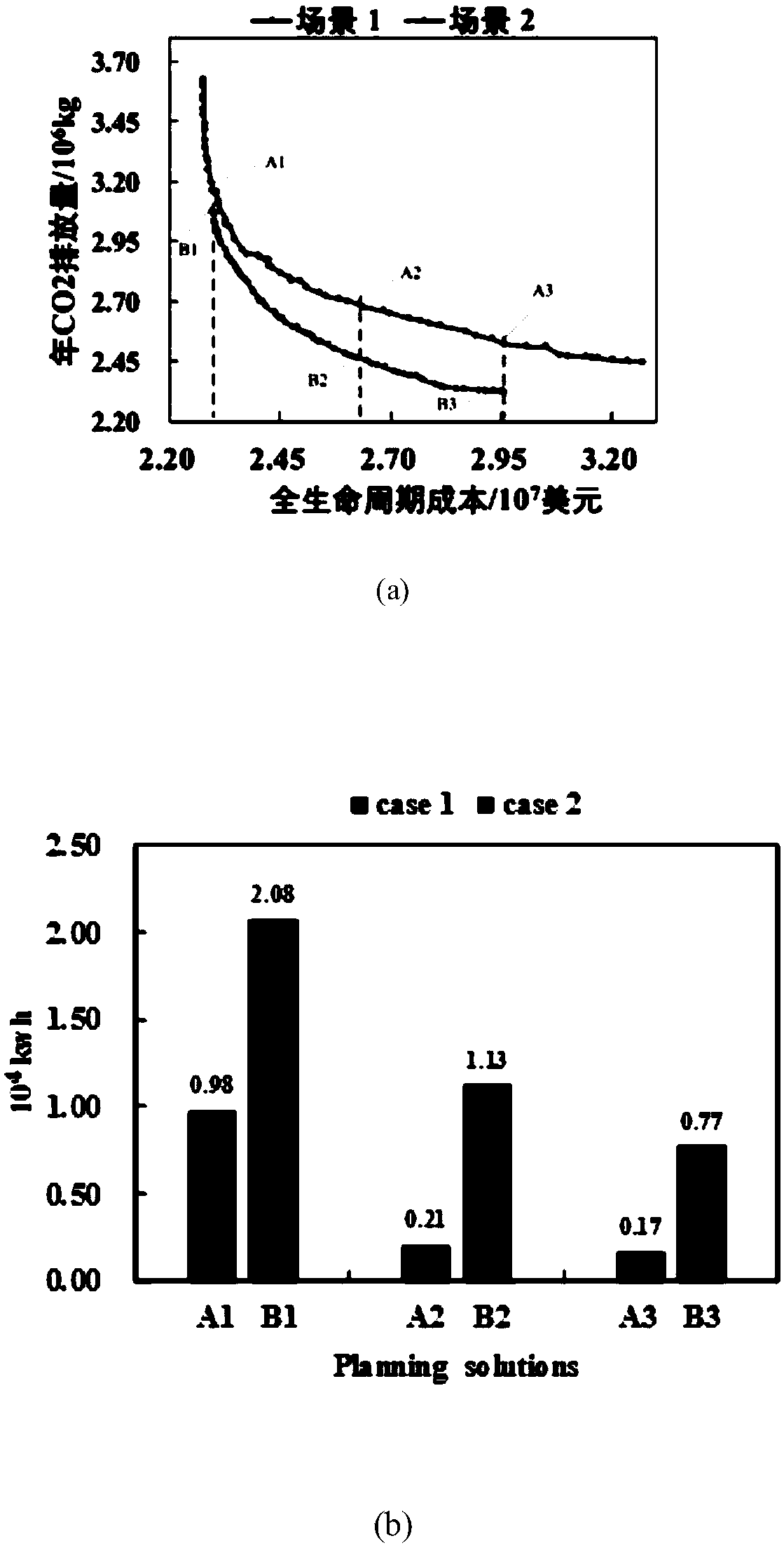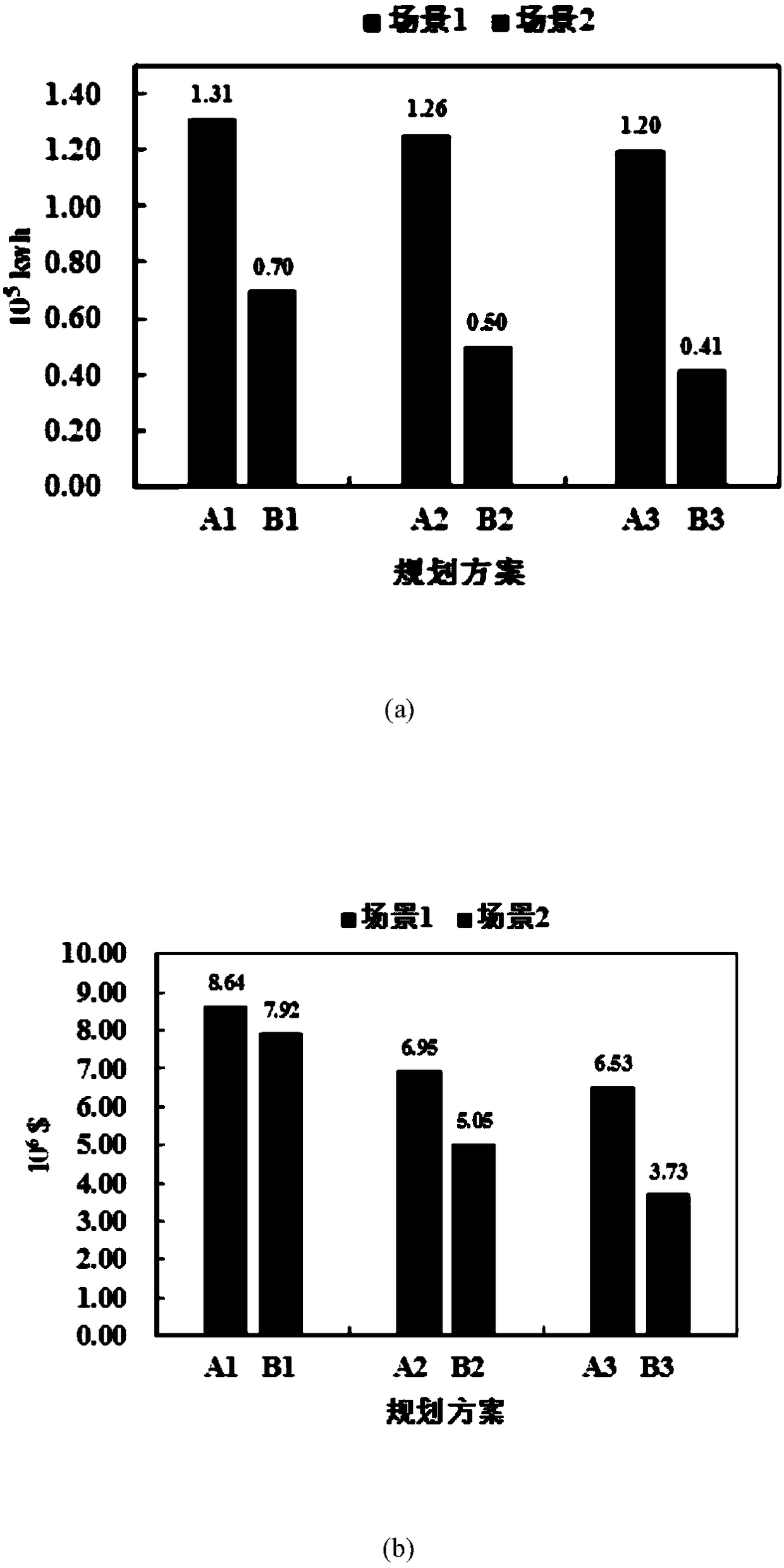A multi-objective programming method for micro-energy grid considering thermal desalination
A multi-objective planning, micro-energy technology, used in resources, instruments, data processing applications, etc.
- Summary
- Abstract
- Description
- Claims
- Application Information
AI Technical Summary
Problems solved by technology
Method used
Image
Examples
Embodiment 1
[0042] Embodiments of the present invention provide a multi-objective planning method for micro-energy networks considering thermal desalination of seawater and utilization of renewable energy, and plan micro-energy networks including wind turbines, photovoltaics, combined cooling, heating and power supply systems, seawater desalination, and storage batteries. It is instructive, see the description below for details:
[0043] 101: Construct a micro-energy network consisting of fans, photovoltaics, CHP, gas boilers, electric boilers, electric refrigerators, absorption refrigerators, seawater desalination devices and water storage tanks, and use two types of renewable energy utilization equipment: fans and photovoltaics ;
[0044] 102: Obtain natural gas consumed and electric energy produced when CHP works in heat-constant power mode, obtain heat energy provided by CHP and gas-fired boilers to heat load, absorption refrigerator and seawater desalination device; obtain heat and c...
Embodiment 2
[0048] The scheme in embodiment 1 is further introduced below in conjunction with specific examples and calculation formulas, see the following description for details:
[0049] 201: Build a micro-energy network;
[0050] 1) The structure and operation mechanism of the micro energy network
[0051] Among them, the structure of the micro energy network is as follows: figure 1 As shown, it is composed of fan, photovoltaic, CHP, gas boiler, electric boiler, electric refrigerator, absorption refrigerator, seawater desalination device and water storage tank. In order to make full use of renewable energy, two types of renewable energy utilization equipment, wind turbine and photovoltaic, are used at the same time.
[0052] In the embodiments of the present invention, it is assumed that the CHP works in a thermally constant power mode (this mode is a technical term in this field, which will not be described in detail in the embodiments of the present invention), because the thermal...
Embodiment 3
[0112] Combine below figure 2 and image 3 The scheme in embodiment 1 and 2 is further introduced, see the following description for details:
[0113] In order to study the influence of the operation strategy of the seawater desalination device on the multi-objective planning of the micro-energy network, the embodiment of the present invention sets up two scenarios for comparative analysis. In Scenario 1, when the water volume in the storage tank is below the minimum value, the desalination starts and operates at rated power. In Scenario 2, the operation mode of the desalination plant is determined through optimization. The optimization problem is solved using the improved non-dominated sorting genetic algorithm (NSGA-II).
[0114] The Pareto fronts in different scenarios are as follows figure 2 (a) shown. It can be seen that under the same annual CO2 emissions, the full life cycle cost of Scenario 2 is lower than that of Scenario 1. In other words, Scenario 2 has lowe...
PUM
 Login to View More
Login to View More Abstract
Description
Claims
Application Information
 Login to View More
Login to View More - R&D
- Intellectual Property
- Life Sciences
- Materials
- Tech Scout
- Unparalleled Data Quality
- Higher Quality Content
- 60% Fewer Hallucinations
Browse by: Latest US Patents, China's latest patents, Technical Efficacy Thesaurus, Application Domain, Technology Topic, Popular Technical Reports.
© 2025 PatSnap. All rights reserved.Legal|Privacy policy|Modern Slavery Act Transparency Statement|Sitemap|About US| Contact US: help@patsnap.com



